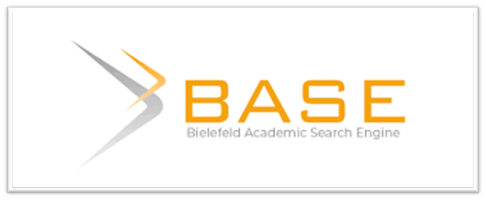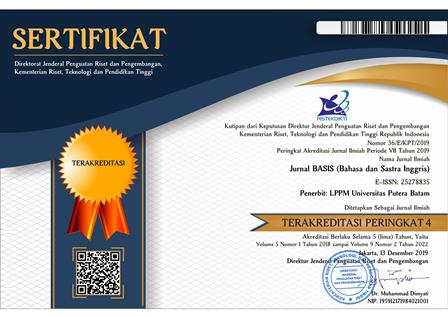IMPLEMENTATION OF ONLINE CREATIVE PEDAGOGICAL MODELS IN EXTENSIVE READING SUBJECT
DOI:
https://doi.org/10.33884/basisupb.v8i2.4039Kata Kunci:
creative pedagogy, distance learning, extensive reading, online learningAbstrak
Covid-19 significantly influences teaching and learning activities. Lecturers need to be more creative to optimize the available electronic tools for supporting the teaching and learning process. Many problems faced by both lecturers and students, especially in private university whose its students are from economically low society, when they are disrupted by this condition. Creative teaching and learning process is needed to make the class more effective and attractive. Besides, it also shapes the students’ minds to follow every sophisticated change and condition in the future by seeking the exact and creative problem-solving. This research aims to describe the implementation of the online creative pedagogical learning models in English Education Department students on Extensive Reading course. The research uses a descriptive qualitative method, which is designed as classroom action research. This research conducted in English Education Department of Hasyim Asy’ari University Tebuireng Jombang, with 25 participants. The result of this research shows that online creative pedagogical models can be used for solving students’ problems, such as Google Classroom, Youtube, and Instagram TV for a synchronous meeting, and Google Meet for an asynchronous meeting. The result shows that those media suitable for implementing creative onli also become alternatives for students who have limited access to the internet because they live in remote areas or have low budgets, but those media are practical and effective.
Referensi
Arends, R. I. (2008). Learning toTeach : Belajar untuk Mengajar (7th ed.). Pustaka Pelajar.
Erdoğan, V. (2019). Integrating 4C Skills of 21st Century into 4 Language Skills in EFL Classes. International Journal of Education and Research, 7(11), 113–124. www.ijern.com
Fisher, R. (2004). What is Creativity? In R. F. & M. William (Ed.), Unlocking Creativity: Teaching Across the Curriculum. David Fulton Publisher.
Mahmud, R. (2013). Evaluasi Penilaian 2: Unjuk Kerja. Artikel Pendidikan. http://rifahmahmud.staff.stainsalatiga.ac.id/2013/01/29/evaluasi-dan-penilaian-2-unjuk-kerja/
Misdi. (2018). Beyond Critical Thinking In Academic Writing: A Discourse Perspective. Jurnal Basis, 1(2), 51–56. http://ejournal.upbatam.ac.id/index.php/basis/article/view/306
Nitko, A. J. (1996). Educational Assessment of Student. Prentice-Hall.
Pentury, H. J. (2017). Pengembangan Kreativitas Guru Dalam Pembelajaran Kreatif Pelajaran Bahasa Inggris. Faktor Jurnal Ilmiah Kependidikan, 4(3), 265–272.
Suparno. (2001). Pembelajaran Bahasa Indonesia dengan Pendekatan Kontekstual.
Suryosubroto. (1996). Proses Belajar Mengajar di Sekolah. Rineka Cipta.
Widodo, S., & Wardani, R. K. (2020). Mengajarkan Keterampilan Abad 21 4C (Communication, Collaboration, Critical Thinking And Problem Solving, Creativity And Innovation) Di Sekolah Dasar. MODELING: Jurnal Program Studi PGMI, 7(2), 185–197. https://www.researchgate.net/publication/348742516
Wijaya, Cece dan Rusyan, T. (1991). Kemampuan Dasar Guru Dalam Proses Belajar Mengajar. Rosda Karya.
##submission.downloads##
Diterbitkan
Terbitan
Bagian
Lisensi













 JURNAL BASIS (BAHASA DAN SASTRA INGGRIS)
JURNAL BASIS (BAHASA DAN SASTRA INGGRIS)
